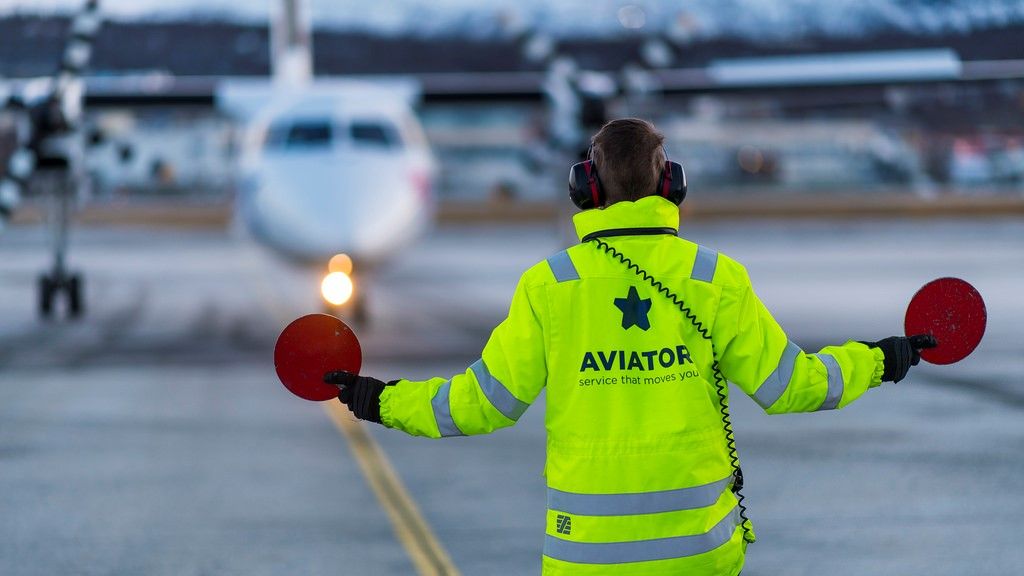There are high expectations set for aviation to become more sustainable, and the industry as a whole is implementing and incorporating new solutions into its day-to-day processes. A recent study has found that only one in 50 climate target goals has been met by the international aviation industry, but some regions are keeping up with them better than others.
The prime example of leadership in greener aviation comes from the Nordic countries – Norway, Sweden, Finland, Denmark, and Iceland. For example, one Swedish airport operator has introduced new environmental emission charges. This would penalize heavier polluting carriers and reward those, operating more environmentally friendly aircraft. Magnus Söderberg, Business Improvement Director at Aviator Airport Alliance, a Nordic one-stop shop for aviation services, agrees that the Nordic region has a strong position when it comes to keeping up with sustainability goals.
“One of the reasons why the Nordic countries are managing to keep up with set sustainability goals is that the focus on sustainability is rather mature and has been on the governing bodies’ agenda for a long time. Concrete actions have been and are being taken. In Sweden, airports operated by Swedavia, for example, have already achieved net-zero carbon emissions, operating fossil-free since 2019.”
Söderberg points out that the majority of Scandinavian airports are a part of the Airport Carbon Accreditation (ACA) programme where the progress of cutting the carbon footprint is being followed. Airports participating in the project must set binding targets for emission reductions, prepare detailed climate accounts and adopt action plans among other tasks.
While sustainability is high on the agenda in the rest of Europe, progress, according to Söderberg, is very much dependent on tenders. The sustainability aspect weighs heavy on whether one is rewarded a tender or not. At the same time, there is a discrepancy in the requirements of the electrified ground support equipment (GSE) fleet and the airports’ infrastructure to support the share of GSE – for example, having the needed number of outlets to charge GSE and similar.
“In Scandinavia, we see a majority of airports being or being close to carbon neutrality – that is not including the emissions of third parties such as airlines, ground handling providers, and others,” explains Söderberg. “The regulations towards suppliers are increasingly tougher in connection to electrification and eco-friendly fuel. Being able to commit to larger electrification of the GSE fleet is a necessity to many who are aiming to win tenders.”
The aviation industry, together with other industries, is facing an enormous challenge, when it comes to aiming for implementing sustainable processes and, eventually, reaching net-zero carbon emissions. Sustainable aviation fuel (SAF) remains one of the bigger challenges for the industry.
“It’s important to note that emissions caused by fuel are regarded as a consequence of the activities of the airport rather than the actual sources which are not owned or controlled by airports,” explains Söderberg. “Large-scale transition to biofuels within aviation has limitations because today the production of SAF takes place on a limited scale.”
However, Söderberg adds that sustainability goals are still being reached all the time on the way to carbon neutrality and the incremental goals are imperative to reach the ultimate target. The small victories are still continuously taking place across the aviation industry, motivating it to work even harder.
Jo Alex Tanem, CEO of Aviator, believes that due to the mature and focused strategy implemented at the Nordic airports, in regard to the electric equipment, many airports in the region are able to reach the step-by-step aims.
“Because of such focused strategy implementation, we were one of the first ground handlers to introduce electric equipment and have been one of the leading names influencing manufacturers to change from fossil fuel to electricity. Alongside that, we conduct a large part of our aircraft ground stops emission-free today as well.”
Tanem notes that the more mature process of change in the Nordics and the fact that the greener mindset has been on the airport authorities’ agenda longer, brings up the chances of reaching zero-emissions sooner than in the rest of Europe.
Still, there are ways the sustainability in aviation could get more traction and progress a bit faster not only in Scandinavia but the rest of Europe, too. Söderberg brings attention to the fact the risk appetite could be higher.
“It would accelerate needed technology and investments in the industry resulting in a faster transition. The solutions will require effort from not only the airport industry itself but many others, ranging from stakeholders and politicians to biofuel manufacturers, to name a few.”
Tanem adds that just like it is with any change, the more attractive you make it, the faster successful outcomes appear. According to him, if the political environment creates incentives for companies out there to encourage making the change themselves, the chances that aviation companies will drive to zero emissions in time to reach set targets are high.












